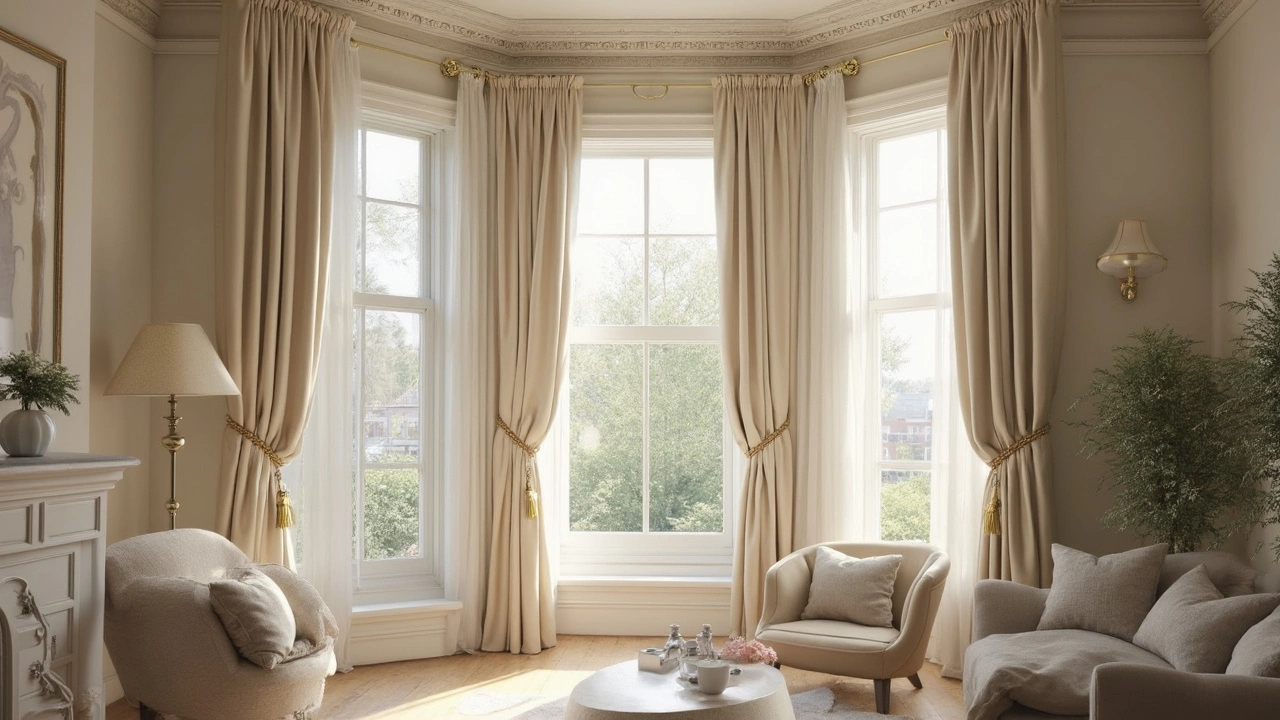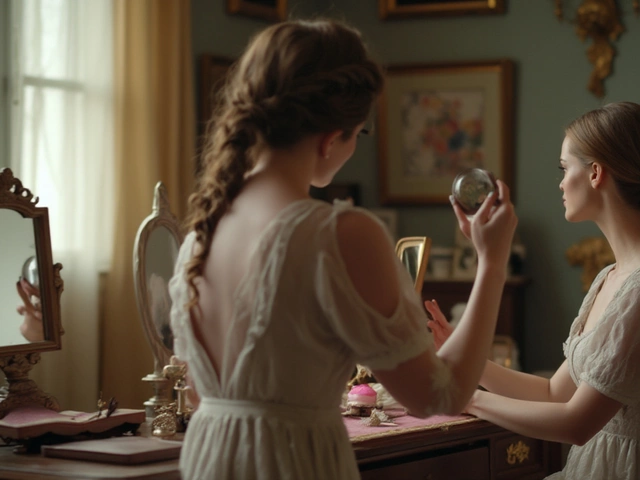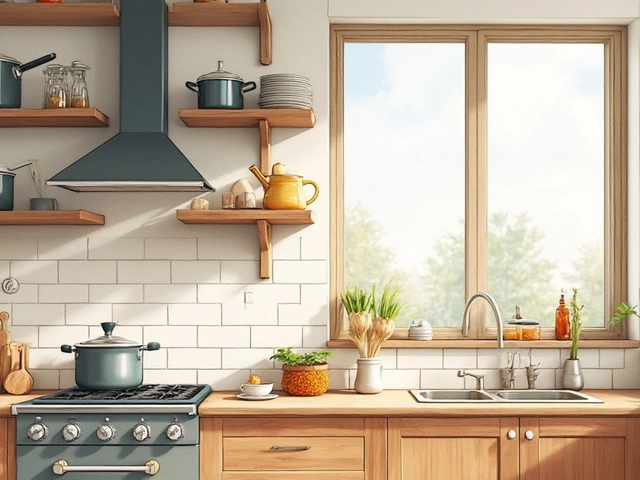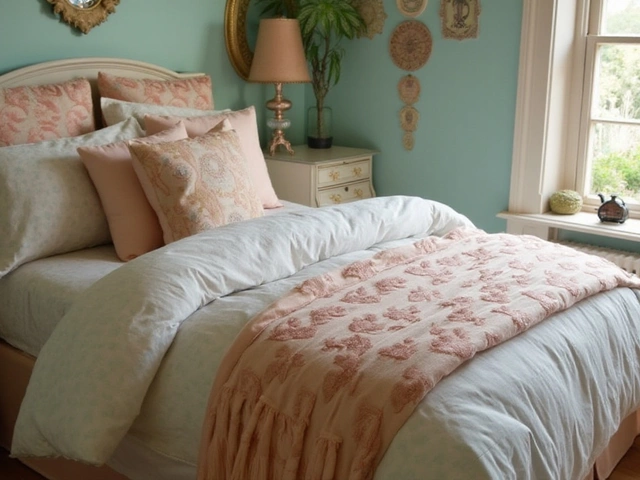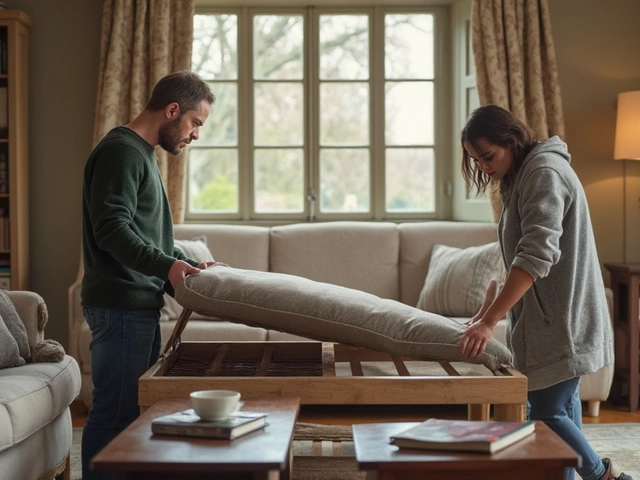Classy curtains aren’t about dropping loads of cash on designer drapes. It’s all in the details—and you can get that polished look even with affordable panels. The first thing most people get wrong? Fabric choice. Stay away from cheap-looking polyester and shiny materials. Aim for natural, matte fabrics like cotton, linen, or even blends that mimic them. Even blackout panels can look chic if you go for a textured weave.
And here’s a sneaky tip nobody tells you: always iron or steam your curtains before hanging. Those fresh-out-the-bag wrinkles scream “budget.” It takes ten minutes but makes a world of difference. If you want curtains that turn heads, treat fabric like the main character—it shouldn’t look like it just came out of a package.
- Choosing Fabrics That Instantly Look Expensive
- Hanging Curtains Like a Pro
- Picking the Right Length and Width
- Finishing Touches: Hardware and Details
Choosing Fabrics That Instantly Look Expensive
The type of fabric you pick changes everything when it comes to curtains looking classy. Nobody’s falling for shiny polyester or plastic-y blends—they almost always look cheap. The trick is to go for fabrics that have texture, weight, and a natural vibe. That means cotton, linen, silk, or even decent blends that don’t look like a Halloween costume. Linen especially has this crisp, relaxed look that feels high-end even when you buy it on sale.
Dense fabrics like velvet or heavy cotton can block light and also add a sense of coziness and luxury. Here’s something wild: according to a 2023 home decor survey, over 70% of interior designers picked linen and velvet as their top choices for a classy look. Sheers work too, but pick the ones that don’t look see-through and flimsy—think voile or organza instead of stuff that feels like netting.
- Stick to matte or barely-shiny finishes—casual sheens on silk or satin blends, never super glossy.
- Bigger textures and subtle patterns (like herringbone or slub) look a lot more expensive than flat, thin fabric.
- If you’re on a tight budget, buy basic cotton panels and add your own touches, like iron-on trim or ribbon at the edges.
- Heavier lining not only blocks more light but also makes curtains hang in a rich, full way, so they don’t puddle like a limp towel.
Color matters too. Go for neutral shades (white, cream, soft grays, navy) for timeless style, or deeper jewel tones if you want drama without the risk of looking tacky. Stay away from neon or super bright shades—they rarely give off that expensive vibe.
| Fabric Type | Classy Factor | Bonus Point |
|---|---|---|
| Linen | High | Breezy texture, easy to care for |
| Cotton | Medium-High | Versatile, mixes well with most styles |
| Velvet | Very High | Blocks light, dramatic and cozy |
| Silk | Very High | Luxurious, needs lining but looks amazing |
| Polyester | Low unless blended well | Works if fabric has texture and weight |
The main move? Touch fabric samples before buying—what feels good will always look better on your windows. Trust your hand more than the sales pitch.
Hanging Curtains Like a Pro
This is where most people accidentally sabotage their curtains. A great fabric only gets you halfway—if you hang things wrong, even the best panels look off. First, always hang the rod higher than the window frame. Aim for 4-8 inches above the frame, or go almost up to the ceiling for that pro-designed feel. It tricks the eye and makes ceilings look taller. If you’ve got 8-foot ceilings, don’t be afraid to hang curtains just an inch or two below crown molding.
The width of your curtain rod matters too. Extend it several inches past each side of your window—shoot for at least 6-10 inches if space allows. That way, when the curtains are open, they frame the window instead of blocking light. It’s a move straight out of every interior design guide.
For truly classy curtains, don’t skip the details. Use sturdy brackets and proper anchors, especially if your walls are drywall. Saggy rods are a dead giveaway you didn’t plan ahead. And make sure your curtain panels just kiss the floor—anything too short looks unfinished, but a little puddle of fabric is chic if you’ve got the right style room.
- Mount rods high and wide to open up the space.
- Use enough panels—your window decor shouldn’t look stretched or skimpy. Aim for fabric width that’s 2 to 2.5 times the window width for soft, full pleats.
- Double rods let you layer sheers with heavier curtains, so you get sunlight and privacy without looking cluttered.
If you’re not convinced, here’s what design experts have found works best:
| Tip | Result |
|---|---|
| Rod 6-8 inches above window | Makes ceiling look higher |
| Rod 6-10 inches wider than window | Makes window look bigger |
| Panels 2-2.5x window width | Luxurious, full appearance |
Following these steps gives your curtains that crisp, magazine-worthy vibe—without needing pro installers or fancy tools.
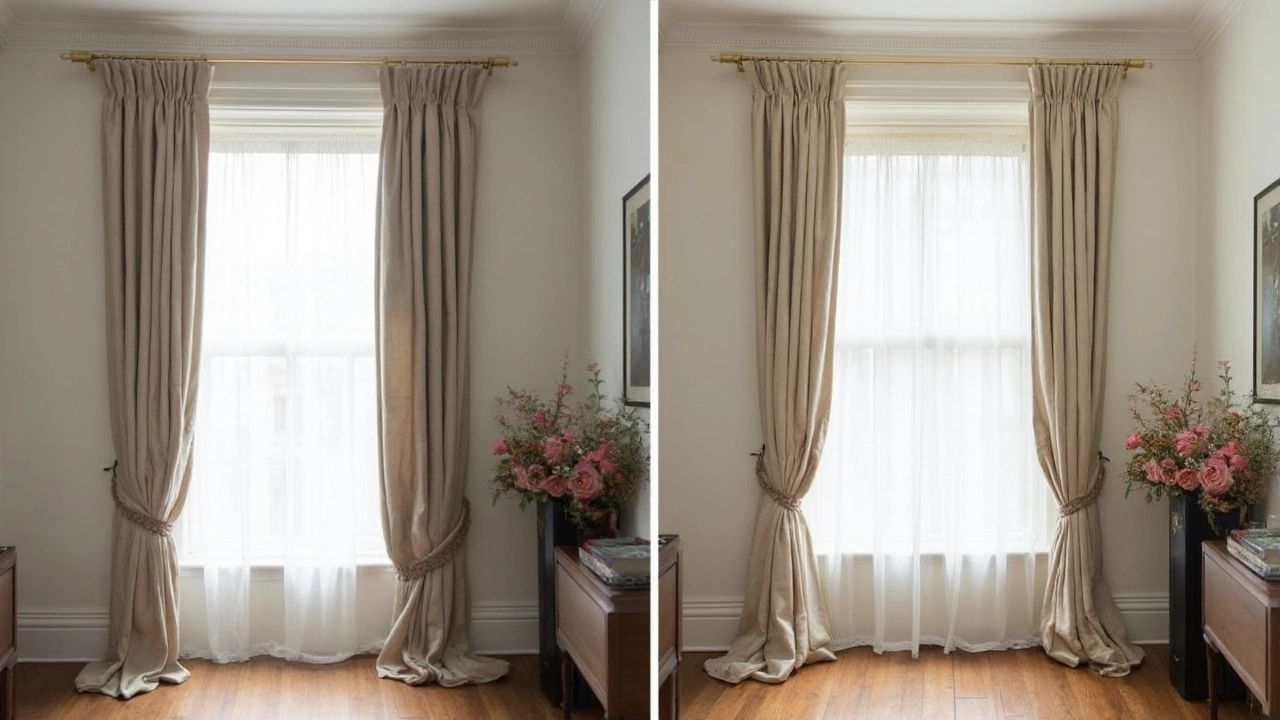
Picking the Right Length and Width
If you want curtains that actually look classy, getting the length and width right is a must. Too short, and your windows look awkward. Too narrow, and the panels lose that rich, full feel.
Here's the deal: curtains should almost always hit the floor. If they float halfway above the baseboard, it just looks rushed. The sweet spot for most setups is either:
- Grazing the floor (barely touching for a crisp look)
- Puddling an extra inch or two on the floor if you’re into a slightly more relaxed or dramatic vibe
Steer clear of the “high-water” look—curtains that end above the floor make even nice fabric look cheap. If you’re mounting hardware above the window frame (which you totally should, by the way), measure from your rod all the way down to the floor. Double check! Even small mistakes become obvious once those panels are up.
Width is the other biggie. Panels should be wide enough so each side creates soft, generous folds when closed. The rule of thumb? Each panel’s width should be at least double, or even two and a half times, the width of the window. So, if you’ve got a 4-foot-wide window, plan for about 8 to 10 feet of total fabric—split between your panels. Too skinny, and you lose all volume.
| Window Width | Total Curtain Width (Both Panels) |
|---|---|
| 3 feet (36") | 6-7.5 feet |
| 4 feet (48") | 8-10 feet |
| 5 feet (60") | 10-12.5 feet |
It sounds like a lot, but this trick is what gives curtains that magazine-worthy polish. If you’re shopping, don’t get fooled by single panel listings—always check the fine print for “width per panel.” It’s so easy to end up with flimsy-looking window decor if you skip this step.
Getting these measurements locked in makes your curtains look tailored and way more expensive, even if you grabbed them during a sale.
Finishing Touches: Hardware and Details
Even the fanciest curtains can look cheap if you use flimsy or dated hardware. So, don’t overlook the rods, rings, and brackets. Ditch plastic and go for metal rods with a matte black, antique brass, or brushed nickel finish—they look expensive and hold up well. Keep finials (those pieces at the end of the rod) simple and solid. If you love a modern vibe, choose square or clean round finials. Vintage-style? Look for crystal or antique brass options.
One detail people miss: curtain rings. If you want that magazine look, hang your curtain panels with clip rings or eyelet rings above the rod for nice, even pleats. Rings make it way easier to open and close your curtains too.
Matching your hardware to other metals in the room instantly ties everything together. If your lamp and handles are gold, go for gold or brass rods. Mixing too many metal finishes makes a room feel scattered, not classy.
Let’s talk curtain tiebacks. Old-school ropes or tassels often look stuffy, but leather straps or simple fabric sashes feel modern and upscale. Want an easy DIY? Just use a wide ribbon in a solid color that matches your decor.
- Use sturdy, thick rods that don’t bow in the middle for tall or heavy curtains.
- Keep hardware about 6-12 inches wider than your window on each side so panels don’t block the glass when open.
- Install rods at least 4 inches above the window frame (higher if you want the illusion of taller ceilings).
- Swap out basic plastic brackets for heavy-duty metal ones if you’re upgrading your curtains.
Quick stat: According to a 2023 home decor survey by Houzz, 68% of homeowners said new curtain rods and hardware made a bigger difference to the overall look than even replacing the panels.
Details aren’t just the icing—they’re what elevate basic curtains into something you’ll actually be proud to show off.

